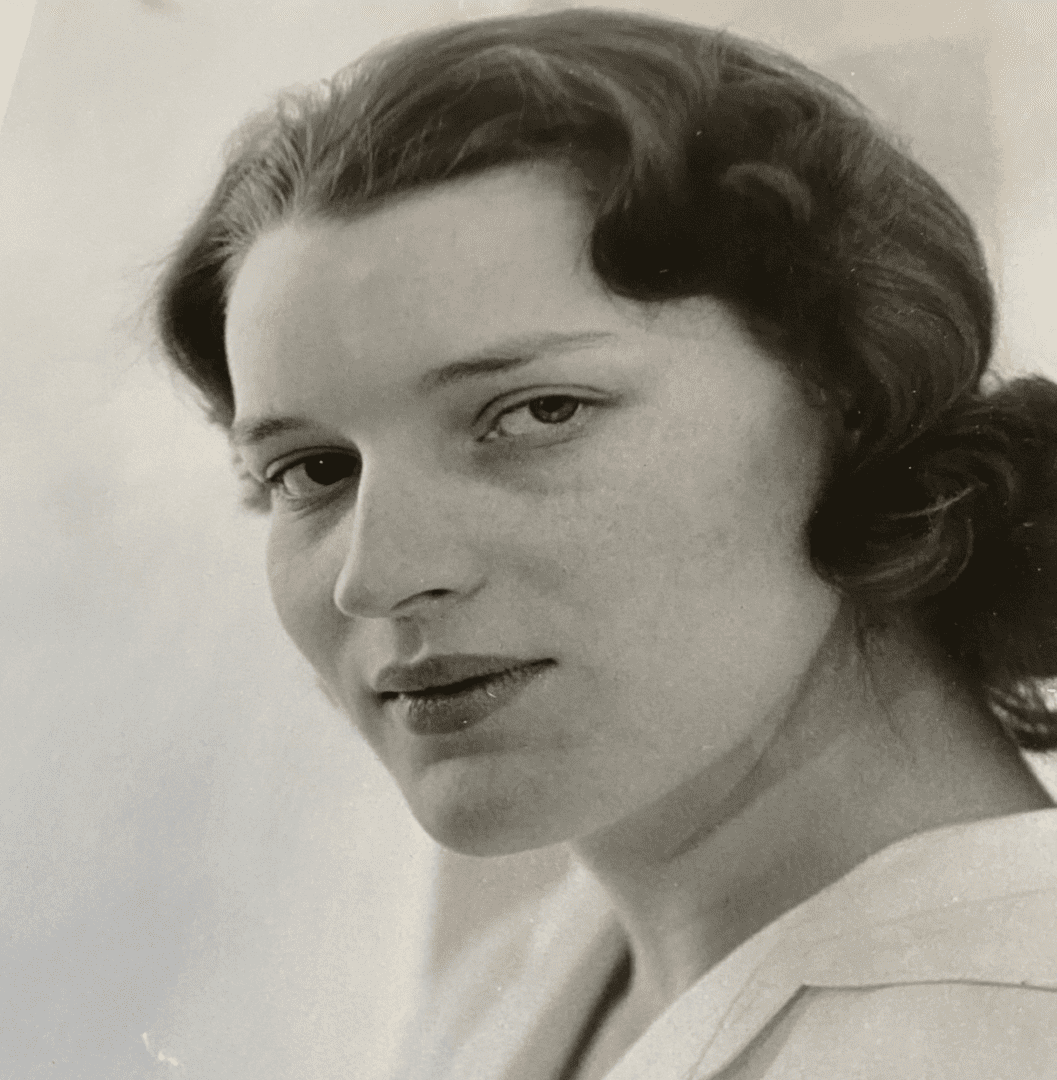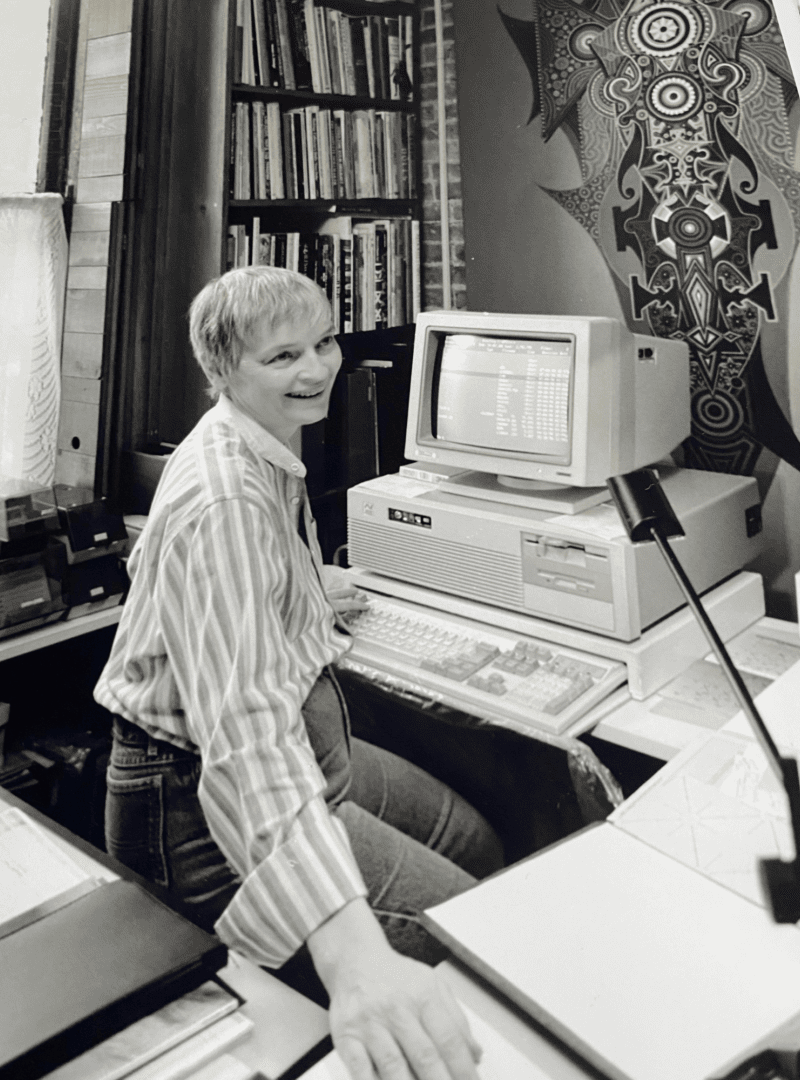WELCOME
My name is Colette Corry, and Colette Wolff was my aunt. Aunt Colette was always a glamorous figure, and I was proud to be named for her.
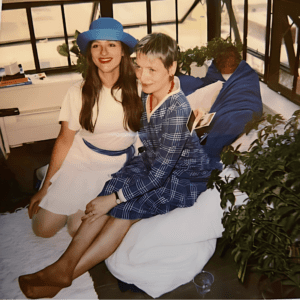
I often thought that the consolation for not being blond like my sister was that my long brown hair made me look just a little like my beautiful aunt. She was not my aunt by blood, but I wanted to be like her.
 Colette Elaine Slightam (later known as Colette Wolff) was my mother’s friend in college at the University of Wisconsin at Madison. At college, my mother, Irmtraut Wolff (known as Irmie), thought Colette should meet her older brother Theodore Wolff (known as Teddy), a painter and student of art history.
Colette Elaine Slightam (later known as Colette Wolff) was my mother’s friend in college at the University of Wisconsin at Madison. At college, my mother, Irmtraut Wolff (known as Irmie), thought Colette should meet her older brother Theodore Wolff (known as Teddy), a painter and student of art history.
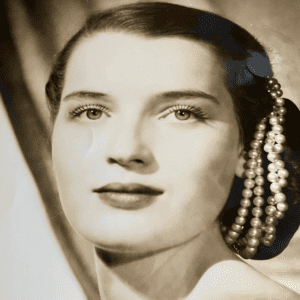 Colette was an actress enrolled in the school of speech with my mother, and Teddy knew the elegant Colette by sight. He told Irmie that he had no interest in someone so unapproachable.
Colette was an actress enrolled in the school of speech with my mother, and Teddy knew the elegant Colette by sight. He told Irmie that he had no interest in someone so unapproachable.
At first, the feeling was mutual and they managed to not meet for at least a year.
Then, the story goes, they met, fell in love and married. As a matter of fact, when my mother married my father, Aunt Colette designed and sewed the gowns for the bride and the wedding party.

Colette had grown up in Madison, the eldest of four — two girls and two boys. Colette and her siblings lived in a large house on a lake with their grandmother and Aunt Byrnina while their parents traveled around the piano bars of the midwest, their father singing and their mother playing the piano or the organ for sing-alongs. The Slightam parents’ theatrical flair was expressed in the names of their children: Colette, Lucretia, Warren and Piere. This arrangement was supposed to be temporary, but it lasted for years.
 Colette was multi-talented. Her sister Lucretia recalls that Colette might have been a professional pianist or singer if she chose.
Colette was multi-talented. Her sister Lucretia recalls that Colette might have been a professional pianist or singer if she chose.
After her years pursuing acting, and after running a small antiques shop in New York City called Interiors, Colette delved more deeply into the sewing or stitchery that she had enjoyed her entire life.
Lucretia describes the pleasure they shared when sewing together in the evenings and remembers Colette’s first attempt at creating a stuffed toy. 
It was an elephant that wobbled because the legs splayed out too far.
From childhood, I knew my Aunt Colette made dolls. When I was very young, my mother and ‘Aunt Colette’ built me a cardboard playhouse, where I spent countless hours playing with Colette’s earliest designs, before she created Platypus.

She later gifted me the prototype hippo from her Platypus collection, along with Giggles the Jester. These cherished creations were lovingly passed down to my sister, making them a treasured part of our childhood.
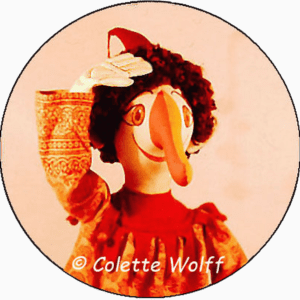

I knew that she made quilts. She gave me and my husband a quilt when we married. I knew she went to quilting festivals and taught doll-making, but most of this seemed to happen far away, off the main stage of our life in New York City.

We all lived within walking distance on the upper west side of Manhattan. Aunt Colette and Uncle Teddy lived in a third-floor walk-up apartment with a succession of Persian cats, with names like Nizzybee and Fitzwilliam.

The walls were covered with Teddy’s art, drawings from World War II, realistic animals from his youth, and more mature surrealistic scenes occupied by owl/cat/bird creatures of his imagination. One of the most spacious rooms in the apartment was Teddy’s studio. I remember going to gallery showings of Teddy’s paintings.

A large canvas of his had pride of place in my parents’ living room. Then for a number of years, Teddy was the art critic for the Christian Science Monitor. His reviews were short, personal essays about art and its meaning. In short, Teddy’s work was the center of attention in Teddy and Colette’s home, even when she published The Art of Manipulating Fabric in 1996.
After my uncle passed away, Aunt Colette left the paintings on the walls, and his studio remained as it was. She continued with her creative work, devoting much time to participating in The Textile Study Group of New York, for which she wrote newsletters.

She submitted fiber art to shows– fabric pieces, weaving, doll-sculptures. I knew about her work from conversations now, but she rarely showed me what she was making. I attended only one group show in a gallery in midtown Manhattan.
Only when Aunt Colette was in poor health and needing help in her home did I get an inkling of the extent of her creative output. I found quilts in the back of cupboards and closets–finished and unfinished quilts, tapestries she had submitted to shows, remnants used for teaching.

I discovered original toys and dolls for Platypus designs, boxes of printed pattern booklets and folders of letters from appreciative fans. The Platypus design booklets astounded me.

Colette’s exquisite drawings, clear writing, and extensive research were all meticulous. I found stacks of custom-made containers that Colette made from recycled materials; these boxes contained fabric sculptures, tapestries and samples of weaving that incorporated materials such as ribbons, beads and feathers.

Aunt Colette had a number of sewing machines, a thousand kinds of fabric, a million kinds of thread, a billion buttons, including miniscule ones for dolls clothes. Her library included vintage magazines with patterns for making clothes and toys at home, art history, histories of clothing, quilting books by her and others.
File cabinets were stuffed with articles she clipped, articles she wrote, sketches, finished drawings, and unpublished manuscripts. I found a slide show she presented at New York University. Long before Aunt Colette’s passing in October 2020, I realized that she was an under-recognized artist and I wanted to help make her work known to more people.

This website is a tribute to Colette Wolff, fiber artist, designer, author, teacher, and maker of dolls, quilts and more. Some pieces from her collection have been acquired by the Helen Louise Allen Textile Collection at the Center for Design and Material Culture at the University of Wisconsin, Madison.

These items include the muslin samples of sewing techniques that Colette described in her encyclopedic The Art of Manipulating Fabric. This book is still for sale and Colette’s Platypus designs are still available on the website, The Dollmakers Journey.
In addition to links to these resources, there is a link to Something Under the Bed, which includes a bibliography of Colette’s writing, as well as a link to a website for The Textile Study Group of New York. Aunt Colette was a gifted, inspired and prolific artist. There is a lot to see and learn.
Finally, many thanks to those who have supported my CW journey of discovery and archival process: Lucretia Danielson, Allan Ming Chong, Bonnie Epstein, Bruce Nelson, Joan Pao, Leigh Martin, Carolyn Jenkinson and Paul Phalen. And lastly, I would like to express appreciation to Beth Schindele, whose professional support made this website all that it is.

Colette Wolff, a renowned textile artist and author, was born in 1929 and passed away on October 23, 2020, at the age of 91.



